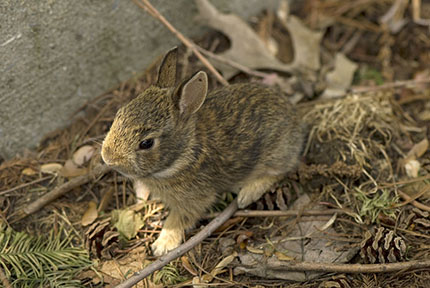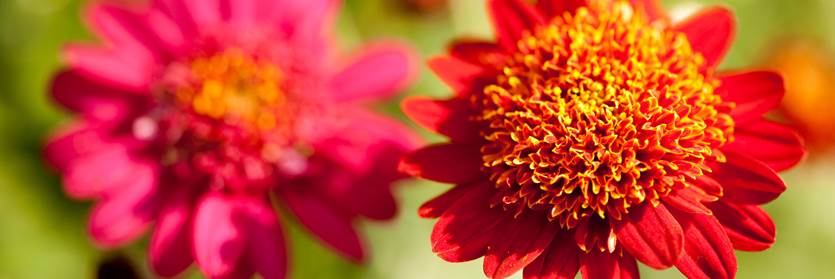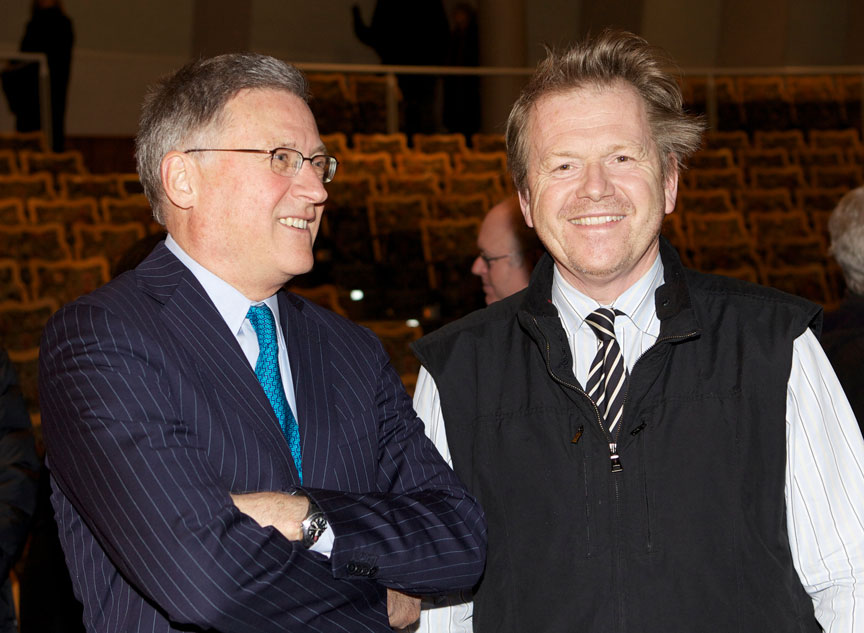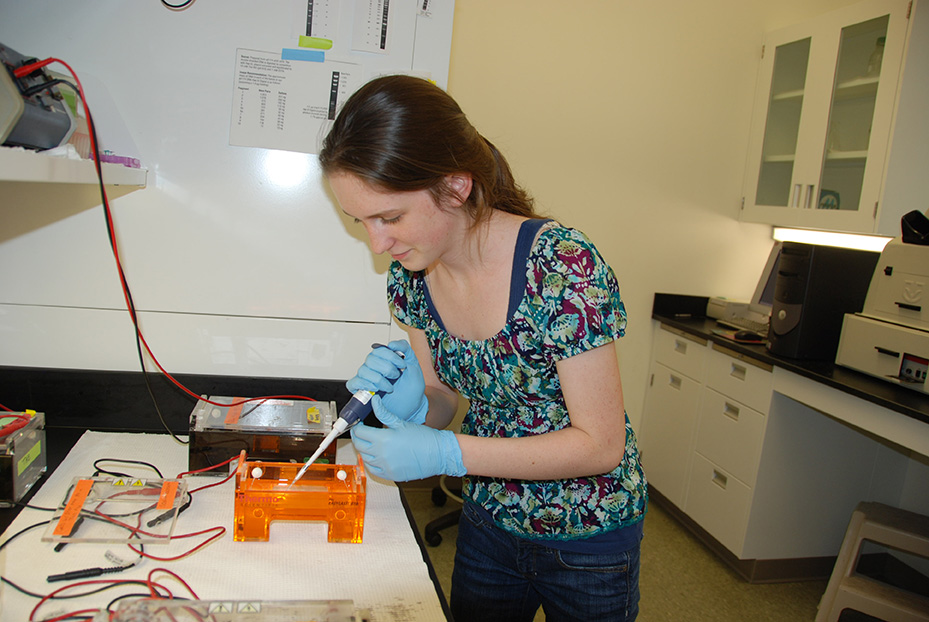Gong Xi Fa Cai!
Posted in Wildlife on February 3 2011, by Plant Talk
Best wishes for the Year of the Rabbit. May all the rabbits in your garden always be on the correct side of the fence!

Year of the Rabbit (photo by Ivo M. Vermeulen)

Inside The New York Botanical Garden
Posted in Wildlife on February 3 2011, by Plant Talk
Best wishes for the Year of the Rabbit. May all the rabbits in your garden always be on the correct side of the fence!

Year of the Rabbit (photo by Ivo M. Vermeulen)
Posted in Photography on February 3 2011, by Plant Talk
Ice storms are good for no one. Not for people. Not for birds. Not for cars. And certainly not for plants. But boy, they sure can be pretty.
Ice-Coated Bamboo (photo by Ivo M. Vermeulen)
Posted in Photography, Wildlife on February 2 2011, by Plant Talk
It’s been a hard winter, and even though Punxsutawney Phil didn’t see his shadow today, we’re with our feathered friends. After this latest winter storm, we’re not quite sure spring is on the way, either. (Even though, let’s be honest, we know it’ll be here before we know it!)
One Obviously Exasperated Robin (photo by Ivo M. Vermeulen)
Even the Turkeys Had to be Careful About Where They Walked
(photo by Ivo M. Vermeulen)
Posted in Around the Garden on February 2 2011, by Plant Talk
 The 50-acre, old growth Native Forest is the heart of the Garden. It is one of the reasons Nathaniel Lord Britton settled on this 250-acre plot in the Bronx as the place to build his dream Botanical Garden, it is home to at least one tree that was alive at the time of the signing of the Declaration of Independence, it is home to some of the Garden’s most fascinating residents, it is a place where scientists can study everything from global warming to genetics, and it is a very fine place to go for a stroll. The Forest is a vital part of not just the New York Botanical Garden, but also of New York City, and the world.
The 50-acre, old growth Native Forest is the heart of the Garden. It is one of the reasons Nathaniel Lord Britton settled on this 250-acre plot in the Bronx as the place to build his dream Botanical Garden, it is home to at least one tree that was alive at the time of the signing of the Declaration of Independence, it is home to some of the Garden’s most fascinating residents, it is a place where scientists can study everything from global warming to genetics, and it is a very fine place to go for a stroll. The Forest is a vital part of not just the New York Botanical Garden, but also of New York City, and the world.
For these reasons, and for so many more, we are delighted that the United Nations has declared 2011 “The International Year of Forests.” The UN says that the year is a “celebration of the vital role that forests play in people’s lives … amid growing recognition of the role that forests managed in a sustainable manner play in everything from mitigating climate change to providing wood, medicines and livelihoods for people around the world.”
We’ll be joining in on recognizing the International Year of Forests with a series of events throughout 2011 (but we’re not ready to announce them just yet). In the meantime, here are some other forest facts from the United Nations:
Posted in Photography on February 1 2011, by Plant Talk
It’s been a few weeks since we announced a Photo Contest as part of Caribbean Garden, a reinterpretation of the permanent collection inside the historic Enid A. Haupt Conservatory. We’ve hit a few bumps along the way logistically, but that hasn’t effected the quality of the photos that you have entered! There are several weeks left in the contest, and another winter storm has barreled into the city to welcome February, so come enjoy the warmth of the Conservatory and snap a few pictures while you’re here!
To get you excited about participating, here are a few of the winners from the previous weeks’ contests.
Head below the jump to see the winners from the past two weeks of the contest!
Posted in Gardening Tips on February 1 2011, by Plant Talk
 Two weeks ago our intellect and imagination was stimulated by the first in our three part Annual Winter Lecture Series. The Thursday morning lecture series (from 10am – 12pm) is entitled ‘Explore Your Greener Side’. The monthly lectures are scheduled for (January 20), February 17 and March 17.
Two weeks ago our intellect and imagination was stimulated by the first in our three part Annual Winter Lecture Series. The Thursday morning lecture series (from 10am – 12pm) is entitled ‘Explore Your Greener Side’. The monthly lectures are scheduled for (January 20), February 17 and March 17.
The sessions begin with a brief opening talk that translates into an amuse-bouche for the main speaker. The opening remarks in January were given by Eric Sanderson, author of Mannahatta. Sanderson blends intellect, charisma and a down-to-earth quality into an infectious mix. He spoke of the social and environmental/ecological choices that we have when planning the future of our city.
Sanderson takes what seems like an impenetrable urban environment and revitalizes it by giving us insight into what it must have looked like before the concrete jungle was erected. He provides city planners, landscape architects and visionaries with the raw materials to embrace and recreate the natural landscape; challenging us to change how we think about the urban environment.
Our featured speaker in January was the renowned urban landscape architect, Michael Van Valkenburgh (pictured, with New York Botanical Garden president Grerory Long). Van Valkenburgh started with the premise that ‘ecology and cultural situations are intimately connected these days’. While it can be tempting to separate ecology from urban development – more forward thinking landscape architects and city planners are integrating the two.
Posted in Photography on January 31 2011, by Plant Talk
Looking down the main pathway of the Perennial Garden.
(photo by Ivo M. Vermeulen)
Posted in Photography on January 30 2011, by Plant Talk
From the roof of the Library Building.
(photo by Ivo M. Vermeulen)
Posted in Photography on January 29 2011, by Plant Talk
The snow gathering on this Magnolia kobus near the Visitor Center makes it look like something out of a fantastic dream.
(photo by Ivo M. Vermeulen)
Posted in Science on January 28 2011, by Plant Talk
| Amy Litt is Director of Plant Genomics and Cullman Curator. |
 Grace Phillips, a senior at Mamaroneck High School, has been named a finalist in the prestigious Intel Science Talent Search. Phillips worked as a Cullman intern at the Garden for more than two years with graduate student Rachel Meyer on research related to the domestication of the eggplant. It is for this research that she is being recognized. In March, Grace will travel to Washington, D.C.,–along with the 39 other finalists–to participate in final judging, display her work to the public, meet Nobel laureates, and to find out if she has won the top prize of $100,000.
Grace Phillips, a senior at Mamaroneck High School, has been named a finalist in the prestigious Intel Science Talent Search. Phillips worked as a Cullman intern at the Garden for more than two years with graduate student Rachel Meyer on research related to the domestication of the eggplant. It is for this research that she is being recognized. In March, Grace will travel to Washington, D.C.,–along with the 39 other finalists–to participate in final judging, display her work to the public, meet Nobel laureates, and to find out if she has won the top prize of $100,000.
In addition to being a tasty treat, the eggplant has been also cultivated for ages–from India, to China, and to the Pacific Islands–for the plant’s medicinal values. Hundreds, if not thousands, of local variations of the eggplant exist throughout Asia, varying widely in size, shape, color, and flavor; and are used medically for a variety of purposes. It is likely that the medicinal values of the eggplant come from a variety of potent antioxidant compounds found within the fruits.
Phillips studied what impact the role of centuries of human selection–based on taste and medicinal properties–have had upon the eggplant genome. This involved first studying the chemicals that are thought to be responsible for the gastronomic and therapeutic properties of the various local variations (also known as landraces). By correlating the presence of specific antioxidant compounds to specific tastes and medicinal attributes Phillips attempted to answer a simple question: Are certain medicinal uses of eggplants always associated with high concentrations of specific compounds?
After determining the various chemical compounds within the eggplants, Grace then began to study the genes that are directly related to the synthesis of these compounds, looking for correlations between gene activity and compound abundance. Phillips was then able to put all this information together and pose one final question: Are certain taste and medicinal qualities correlated with high levels of specific gene? Or, in other words: As humans selected for eggplants with specific culinary and therapeutic properties, what effect did this intervention have on the eggplant genome and on the plant’s gene functions?
Grace is one of seven finalists from New York State, second only to California’s 11 finalists. She appears to be the only finalist working in the field of plant sciences, and one of only a handful of students studying organismal diversity/evolutionary questions. Grace’s work continues a long heritage of scientific study at The New York Botanical Garden on questions of plant diversity, human-plant interactions, and plant conservation. Everyone here at the Garden applauds Grace’s fantastic work and wishes her the best of luck in March!